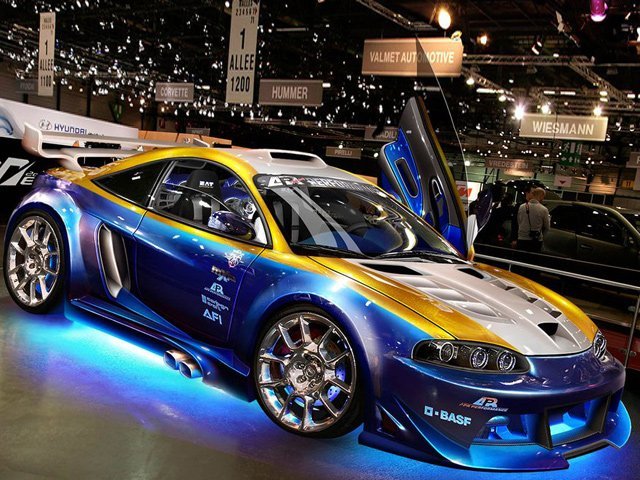Even if that green Eclipse of rather questionable taste hadn't ever graced the earlier scenes of the first "Fast and the Furious" movie with its presence, the Eclipse would still be an icon. One of the easier and cheaper cars to make go fast, the Eclipse was also a big sales hit for Mitsubishi, at least in the Nineties. The car even offered some advantages over its competitors which were uncommon at its price, which accounts for much of its popularity with tuners.


The Eclipse came about much later than many of the cars in either this or the previous Japanese Tuner Icons series. Debuting in 1989 as a 1990 model, the Eclipse entered a market where it was already pretty well established what made for a successful sport compact. As such, it was an instant and massive hit. The turbocharged model made Car and Driver's Ten Best in its first year, and would stay on the list through 1992. There were four basic trims: the base, the GS, the GS-T and the GSX. The bottom trims weren't of much interest to tuners, but the top trims came with factory-installed turbo systems that were easy to modify. This same basic setup would carry over into the second generation of the car when it debuted in 1995, and this would become the most popular for modifying. The 2.0-liter turbo engine on these produced 210 horsepower in stock form and was still very tuner-friendly. Many of these tuners would find that the fuel system was often a weak point on the car, and something as simple as an aftermarket fuel pressure regulator could make for a more responsive throttle. Further modification would usually deliver lackluster results without upgrades to the fuel injects and the fuel pump, and the stock system was already working pretty close to its limit.


Assuming the fuel system had been upgraded, a more aggressive cam was a popular upgrade. The usual focus for Eclipse tuning wasn't big horsepower numbers at high revs, but rather improving low-end torque, an area where the stock car could really use some help. Boost could be turned up once these modifications had been performed, but lag would start to become a problem if you went to a turbo that was too much bigger than stock. One big advantage of the Eclipse was that the GSX trim came with standard all-wheel-drive. The factory turbo and AWD made the Eclipse a much more viable platform for cranking out big power numbers than its FWD competitors.
It also had the advantage of being more common than higher-performance competitors like the Toyota Celica GT-Four (more on that later in the series). Non-turbo engines can be tuned as well, although this tended not to produce very dramatic results. US versions of the naturally-aspirated second-gen Eclipse had a modified version of the Neon's engine, and although there were some supercharger kits for these, it's usually easier to start off with a turbo car. Airflow through the engine is something which can do with some attention as well, but be careful not to overdo it.


An exhaust with a diameter greater than 2.5 inches tends to have a negative effect on torque, the very thing you're working so hard to improve. The second-gen Eclipse is definitely the one to get if you're looking to modify the car. When the third generation of the Eclipse debuted in 2000, there was neither a turbo model nor an AWD model. A V6 replaced the turbo engine, and it actually produced the same amount of power in stock form, but this wasn't really worth the effort to tune. The power went only to the front wheels, and quite simply, there were better cars out there for the price.
A fourth generation of the Eclipse debuted in 2006, but by this point, the Eclipse was a joke. The new cars were heavy, slow and not particularly tuner-friendly. There was technically a 2012 model, but production had in fact ended in August of 2011. It's unlikely that Mitsubishi will again bring out a car like this, and this is a shame, because the Eclipse was really just right for the Nineties sport compact market.
Nouvelles connexes



